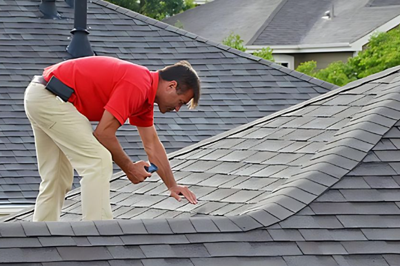
Taking care of a residential roof is crucial for the health and well-being of your home. It protects you from the weather and helps keep your home safe and comfortable. Homeowners should know how to repair and maintain their roofs. This not only extends the roof's life but also protects your investment. Whether fixing minor leaks or scheduling regular check-ups, your roof needs your attention.
Many people may feel unsure about roof care. Climbing onto the roof isn't something most do often. This is where roofers come in. They are skilled experts who possess the necessary tools and knowledge to address a wide range of roofing issues. Their work ensures that repairs and maintenance are done correctly, giving homeowners peace of mind.
Here's how to effectively repair and maintain your residential roof.
Regular Inspections
You should check your roof regularly as part of your seasonal routine. Regular inspections help identify minor issues before they escalate into more significant and costly problems. Contact roofers after heavy storms or at the start of spring. They can reveal hidden damage, such as missing shingles or holes caused by falling branches. It's a good idea to check from both the ground and up close to spot any issues clearly. Look for signs of wear, like curling shingles or debris in the gutters.
These inspections don't take much time and can give you peace of mind. If you're not comfortable climbing onto your roof, consider hiring a professional to evaluate it regularly. They can thoroughly check the condition of your roof and provide tailored advice.
Cleaning Debris
Leaves, twigs, and debris can easily pile up on your roof, especially in the fall. If debris remains, it can trap moisture, leading to mould and leaks. Cleaning your roof and gutters regularly is essential, especially if trees surround your property. Keeping these areas clear helps water drain properly, which prevents damage to your shingles.
While you may want to do this yourself, always prioritize safety first. If your roof is steep or difficult to access, it's best to hire a professional roofing contractor. They have the experience and equipment to clean your roof safely and effectively.
Addressing Minor Damage
Roofs can get minor damage over time. Wind can loosen shingles, and temperature changes can cause small cracks. Resolving these issues promptly can prevent more significant problems later. If you notice a missing shingle or a small leak, it's essential to address it promptly.
Homeowners can often use roofing cement to reattach loose shingles or fill small cracks in their roofs. If the damage is more serious or you're unsure about it, contact a qualified roofer. They can assess the situation and ensure the repairs meet industry standards.
Understanding Roof Lifespan
Each type of roofing material has its own lifespan. Knowing this can help you plan for future repairs or replacements. Asphalt shingles last 20-30 years, while metal roofs can last 50 years or more with proper care. Being aware of these timelines enables you to budget for larger projects and avoid unexpected expenses.
If your roof is nearing the end of its lifespan, talk to a professional roofer. They can guide you on the best replacement options for your home and climate, helping you choose materials that last.
Engaging Professional Roofers
Skilled roofers are essential for repairs and maintenance. They can help you care for your roof over the long term. Their experience enables them to manage various issues, from emergency repairs to routine maintenance. They also offer guidance on maintaining your roof in good condition.
Working with the best roofing companies ensures your repairs are effective and done efficiently. They stay up to date with local building codes, ensuring your repairs comply with regulations. This knowledge can help protect your home and lower your insurance rates over time.
Staying Prepared for Weather Changes
The weather can challenge your roof. From snowfall in winter to heavy rains in spring, each season brings unique issues. Preparing your roof for these changes can reduce potential damage. For example, clear your gutters before the rainy season to prevent overflow and leaks.
Taking proactive steps, such as strengthening weak areas of your roof or selecting materials that can withstand local weather conditions, can be worthwhile. Understanding seasonal impacts will help you make decisions that extend your roof's lifespan.


(0) comments
We welcome your comments
Log In
Post a comment as Guest
Keep it Clean. Please avoid obscene, vulgar, lewd, racist or sexually-oriented language.
PLEASE TURN OFF YOUR CAPS LOCK.
Don't Threaten. Threats of harming another person will not be tolerated.
Be Truthful. Don't knowingly lie about anyone or anything.
Be Nice. No racism, sexism or any sort of -ism that is degrading to another person.
Be Proactive. Use the 'Report' link on each comment to let us know of abusive posts.
Share with Us. We'd love to hear eyewitness accounts, the history behind an article.